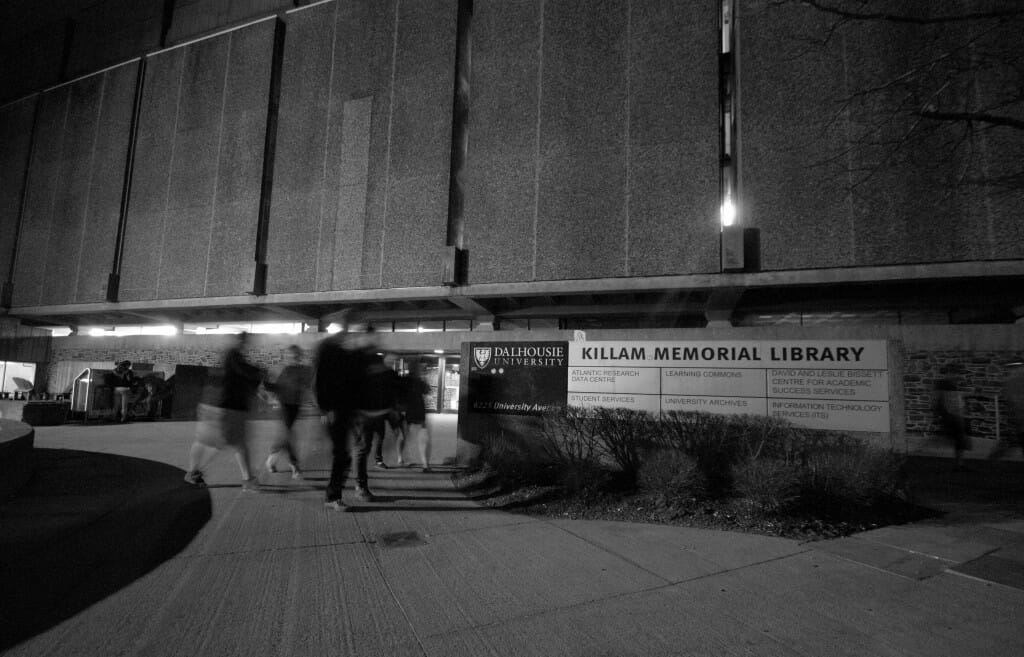
The Faculty of Arts and Social Sciences (FASS) announced during a meeting on Mar. 11 that the faculty’s 2014-15 budget will be approximately $18.1 million, with projected costs of $19.1 million—leaving FASS with a $1 million deficit.
Robert Summerby-Murray, the dean of FASS, and vice-president academic and provost Carolyn Watters were able to reduce the deficit to about $600,000, but the $500,000 in cuts will mean some unionized employees and limited-appointment faculty will be laid off. Although some courses will be cut as a result of these staffing reductions, the faculty will maintain its teaching assistant support.
During the same meeting, Dalhousie Libraries addressed concerns brought up by FASS about the libraries’ new allocation models. Each of the three potential models allocate $224,000 to the faculty in 2014-15, which slashes their acquisitions budget by 43 per cent since 2008-09.
At a public consultation on Feb. 25, it was repeatedly brought up that libraries are the equivalent of labs for FASS students and staff.
“The library has no obligation to be anyone else’s lab. We don’t buy test tubes, we don’t buy Bunsen burners,” said university librarian Donna Bourne-Tyson. “And yet for those of you who want to use the library as a lab, you do expect us to pay for that, and we’re happy to do so, but we’re not funded accordingly.”
Bourne-Tyson said that because Dalhousie contains professional schools, publishers inflate the prices even on books that aren’t for medicine or dentistry. She acknowledged that it wasn’t FASS’ fault, but an inequity within the buying system.
“A lot of people’s jaws just hit the table,” said English professor Jason Haslam.
The meeting mostly consisted of faculty chairs questioning the inequalities within the allocation formulas the libraries are proposing for next year. Many staff were upset that Watters and VP finance and administration (acting) Ian Nason had to leave before much of the library talk happened.
Wayne Hankey, chair of the classics department, encouraged the librarians to take a needs assessment approach to their allocations formula.
“Unless by some unbelievable magic everyone gets satisfied,” said Hankey, “we’ll all just be at war with one another about the choices that were made in producing the metric.”
Much of the faculty said that it’s impossible to put medicine, which has more expensive material costs and doesn’t use the library as often, on the same formula as FASS. Associate dean academic Krista Kesselring added that material costs are too big a factor in the allocation formulas, while the monograph preference is a small part of the formulas.
The allocation formulas were produced by collections and scholarly communications librarian Heather MacFadyen. After complaints at the Feb. 25 public consultation, she met with a statistician on Mar. 10 to discuss how to properly deal with statistical outliers such as medicine. MacFadyen said the statistician found the calculations for the adjunct outliers were fine, but suggested she recalculate the average material costs in terms of means to make it more accurate.
The presentation also showed that the Electronic Access Fund (EAF) has gone up, and is predicted to inflate by five per cent next year, but $400,000 worth of titles within the EAF is being pulled from FASS’ budget. At the same time, funding for faculties like planning and architecture has also gone down. Associate dean of research Julia Wright noticed FASS’ library budget has gone down by almost $300,000, despite the average cost of FASS monographs (non-serial publications) being only 30 per cent compared to other costs. Engineering, whose monographs are more expensive, has had its library budget increased from $322,000 to $348,000.
“For us, the library isn’t just our lab, it’s our long-term investment in the future of keeping the research in this institution,” Wright said. “Our books and our journals are relevant for decades, not just for three to five years like they are in most other faculties.”
Bourne-Tyson said that FASS’ library budget has been on the decline for five years. Wright said she wants the libraries to fix the damage that has been done.
“This is why we’re doing the allocation formula: to make sure we totally start over,” said Bourne-Tyson. “We’re erasing everything we’ve done before, and trying to give you your fair share based on metrics that we both agree are the most reasonable we can find.”







